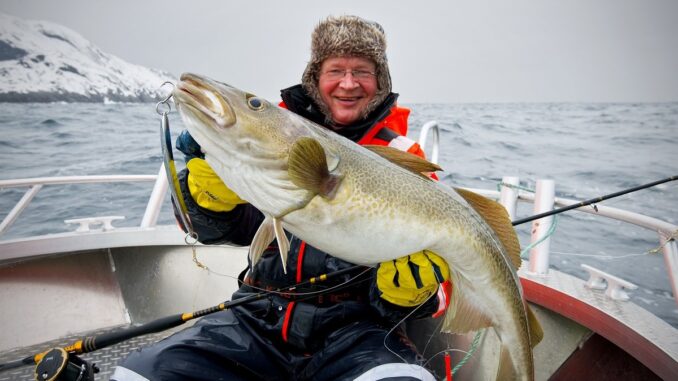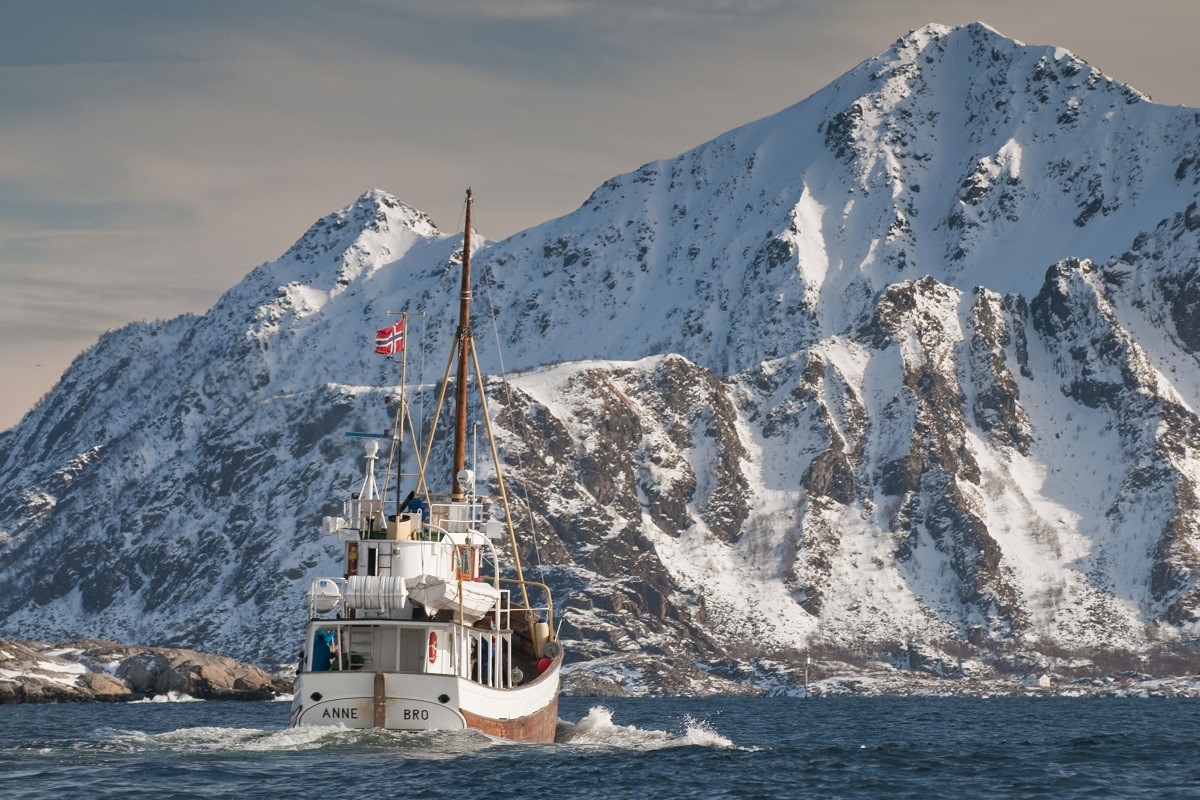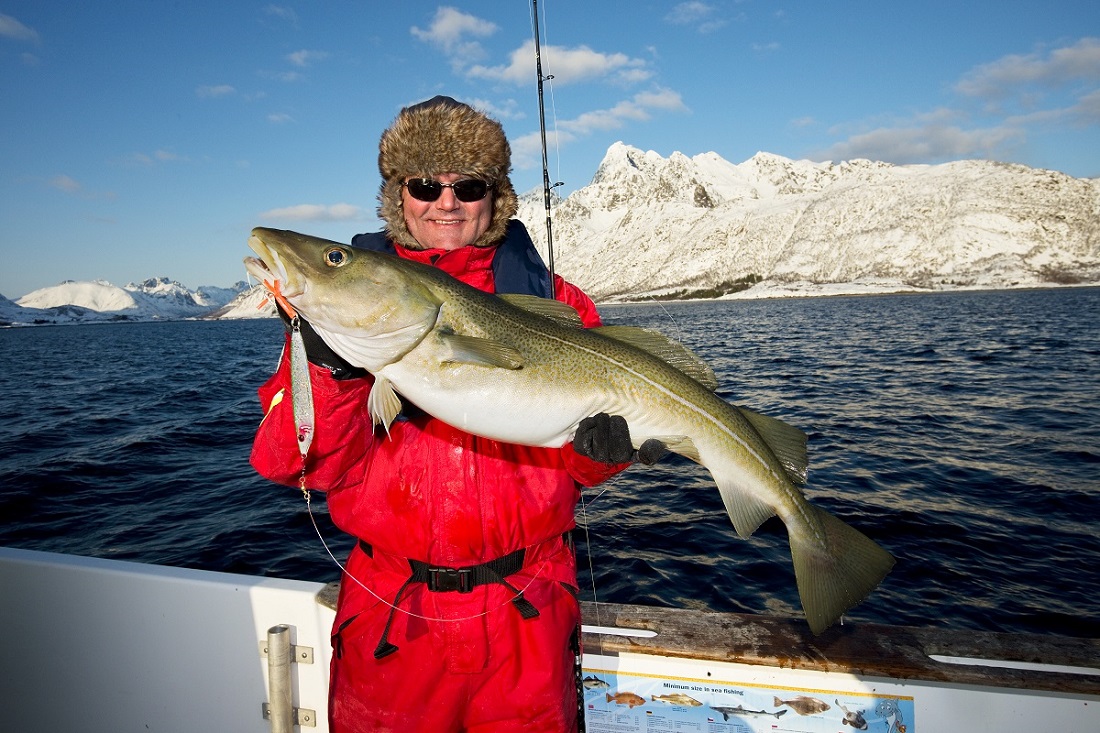
The Lofoten Islands are one of the worst things that can happen to a man’s self-esteem. And to his wallet. It wasn’t cheap to feel sorry for yourself.
But it had to be done. I was a member of the “Legalize Lutefisk” campaign, and I had promised the chef that I would bring him back a cod so he could cook me his version of this traditional Norwegian acquired delicacy.
I had first tasted it in Oslo’s famous Engrebret Café, on the corner of Kirkegaden and Bankplassen. Dating back to 1857, it has serious claims to be Norway’s oldest restaurant.
Formerly the house of a doctor, Greig and Ibsen ate and drank there. In the bar there is a painting of the composer playing the piano for the playwright. It was there I had my first taste of the infamous Lutefisk served with potatoes, mustard and bacon.
I finished it all and was immediately inducted into the “Lutefisk Hall of Fame and Lutefisk Lovers’ Society”.
The Vikings probably ate lutefisk on their sea voyages. It is dried cod coated in lute or lye, a strong alkaline solution.
In Sweden they use lungfish in their lutefisk. The Norwegian use stockfish. The cod is hung on racks for four months and then put in lute and changed from barrel to barrel every day. It is eaten hot. Once, apparently it was cooked in manure.
I went up to Svolvaer in the Lofoten to take part in the annual Cod World Cup. But sadly, I came back ashore empty-handed. I had blanked on the North Sea.
It was my debut in “Skriefoske”, the traditional Nordic he-man sport of cod fishing in the ancient cod rich Vegtjordan waters off the northernmost tip of Norway.

Conditions were perfect. The plankton were about, the sea temperature ideal and the salt content spot on. The captain wore a confidence-inspiring salty seadog beard and the Trollfjorder was equipped with the very latest fish detection devices.
Thirty thousand tonnes of cod are caught every year between January and April at the tip of Norway’s 1100 miles of coastline. One female cod produces three million eggs a year during spawning season.
So, when we dropped anchor five miles offshore from Svolvaer slap-bang in the middle of a shoal of Gaudus Morrhua nearly a mile long and fifty metres thick, expectations on the boat were understandably high.
But, for six hours, all I caught was spume.
Then my rod bent double, and the line smoked out from the bras reel between my legs.
My Hemingway-esque features twisted into a wide grimace of excruciating pain, it needed every ounce in my body to reel in the monster from the deep. My manly forearms bulged, and my groin muscles palpitated to the point of a harrowing hernia.
With one last heave, I swung the brute over the side of the boat, and it fell with a defeated plop at my Wellington feet. I had caught my first pollock.
The World Cod Fishing championships is part of the islands’ annual Cod Festival when the 25,000 inhabitants get together to toast cod in a “Day of Booze” (traditionally March 25th) and throw thanksgiving parties for their favourite great barbel-faced bottom feeder.
For centuries, cod and its derivatives have formed the staple diet as well as the basis of prosperity and most conversation for Lofoten islanders. The sagas mention a fishing season. The Vikings could talk of little else. Apart from herring.

In the 1940s 30,000 boats came to “row” the Lofotofisket. Now the number is less than 2,000 and, despite quotas being enforced on the cod’s migratory route to and from the Barents Sea, the cod industry is taking a battering.
The World Cup winning cod weighed in at 32lb. The largest cod was caught off the east coast of the United States. It was a six feet 211 pounder. My pollock weighed in at a paltry 3lbs.
So, I didn’t win the coveted steel cormorant trophy at the gala dinner and prize-giving.
After a few more Bodo-made Nordland beers, the Cod Bar was yawing. And I had exceeded my conversational cod quota. Then it got rowdy, and everyone started singing, about cod.
“Skrei” means “Wanderer” and I got ready to do my Springsteen cover of the 1961 Dion twelve-bar shuffle classic. But instead, it was local hits like “Great Cod Balls of Fire”, “Never Say Tartare and “Jumpin’ Jack Cod”. Apparently, made famous by a local cult band, “Marceno and the Singing Chefs”.
Now defunct.
“What happened to them?” I asked a big Norseman. He shook his head sadly, saying: “Marceno was generous. He went mad. He couldn’t think of a rhyme for taramasalata.”
The Details
Norse Atlantic Airways have regular flights from London Gatwick to Oslo, as well as transatlantic flights from New York’s JFK, Los Angeles LAX, Fort Lauderdale and Orlando. To check out their full schedule please visit: www.flynorse.com.
For more information on exploring all Norway has to offer, please visit: www.visitnorway.com.
Author Bio:
Kevin Pilley is a former professional cricketer and chief staff writer of PUNCH magazine. His humour, travel, food and drink work appears worldwide and he has been published in over 800 titles.
Photographs courtesy of Visit Norway


Be the first to comment